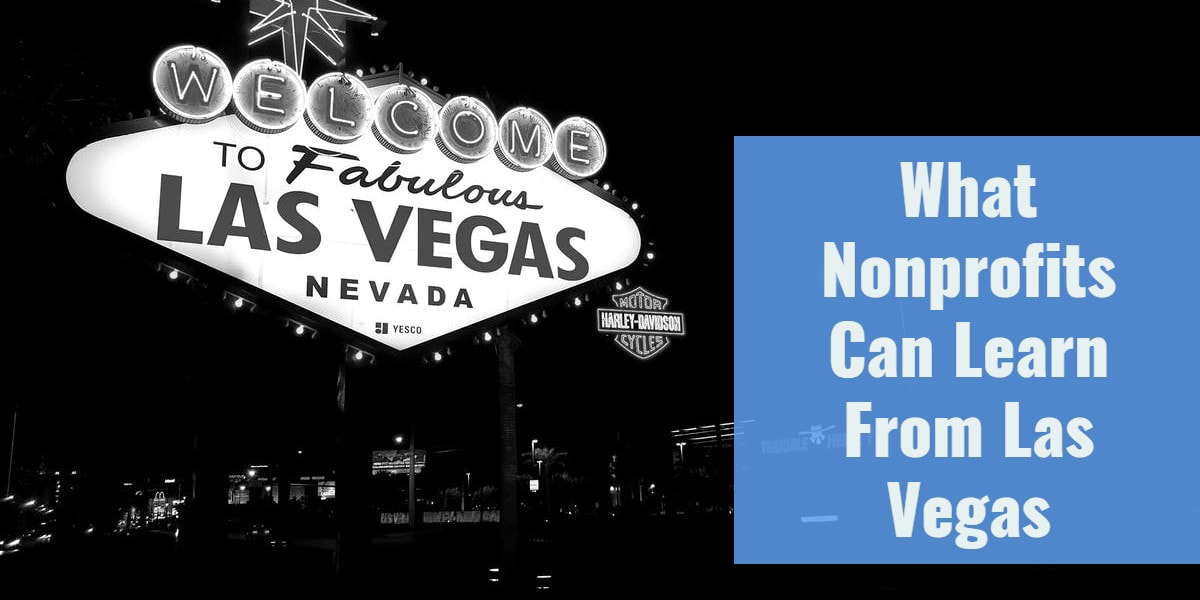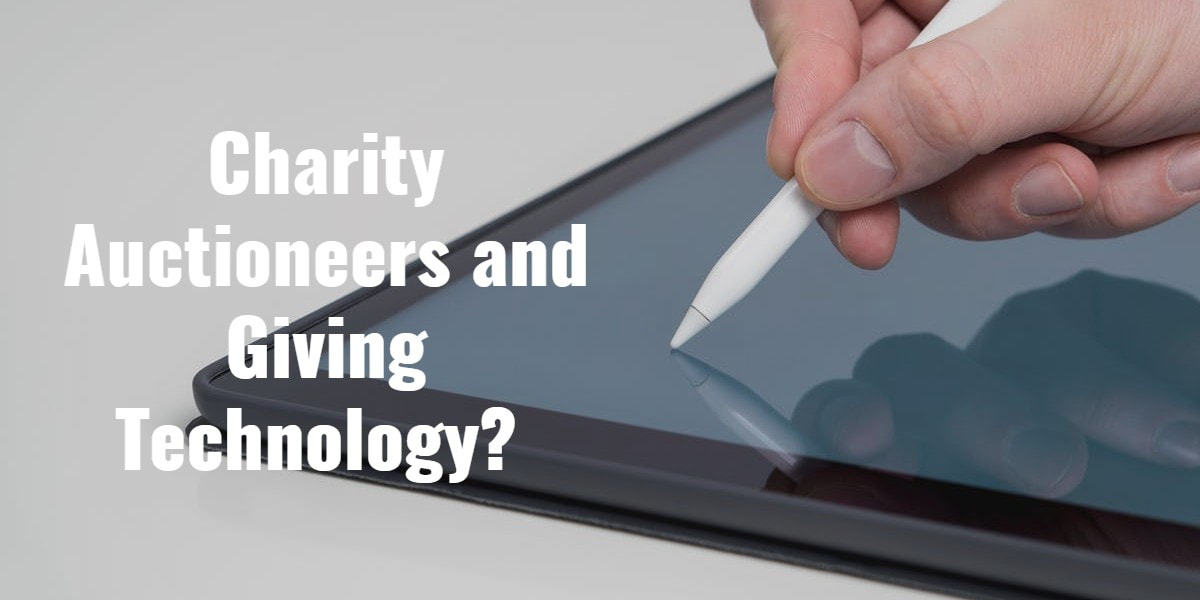Vegas started out as the gambling capital of America. However, as Indian casinos have become more ubiquitous and states have moved to loosen restrictions on betting and gambling, Vegas has been forced to rebrand.
Today, Las Vegas is the center of nightlife. It’s where all the hottest parties are day or night. Celebrities are paid to show up at various events and venues, their mere presence elevating the party to a whole new level.
It doesn’t take long to see what makes Vegas so unique. It’s all about the way they treat you when you’re there. They make you feel special, like a queen; the most important person in the room.
Nonprofits everywhere should take note. Most of the things that Las Vegas does to make you happy and keep you coming back can be translated to nonprofit fundraising and donor cultivation.
1. They don’t say no. No one says no. Ever. If you are in Vegas and you want something, someone will make it happen. In the nonprofit world, when things are hard or the request is strange, most of us say no. Stop doing that. Start saying, “Sure, I’ll see what I can do.”
2. They make you offers you can’t refuse. Vegas attracts you with a clever use of the fear of missing out, or FOMO. They send you emails raving about the cool new thing happening, emails filled with images and videos of people having the time of their lives.
Nonprofits, on the other hand, communicate mostly in dire terms. We write our donors about lost funding, saving kittens, or emergency appeals.
It’s so easy to ignore an email from a nonprofit. Do you know who it’s not easy to ignore an email from? Vegas. They grab your attention, they personalize communications. They go out of the way to make you feel important.
Many nonprofits have stopped using the phone. They’ll send a handful, or bagful, of emails each year, but they won’t call, they won’t text, and they certainly won’t swing by. If Vegas wants to get ahold of you, they are going to reach out through every available channel. And they aren’t going to stop.
So many nonprofits have more information than they can fit into a weekly or monthly newsletter. They’ll keep pushing things back to the next edition, unwilling to accept that the information is never going to make any edition. Stop doing this! Send out a second email, send a text, push the information out over social media. Communicate with your donors.
3. They take care of you. When you are in Las Vegas, they take care of you really well. Insanely well. You never want for anything. If you have money to spend in Vegas, they will get it out of you. Heck, even if you don’t have money to spend, they will get it out of you.
Nonprofits are essentially doing the same thing. We want to get money out of people. The only difference is that people tend to feel better after making a donation to a nonprofit than they do after a weekend in Vegas. So, in theory, it should be even easier to convince people to give. But it’s not, because Vegas does a better job of making people feel good.
Nonprofits should ask themselves what they can do to take care of their donors. The answer is probably an increase in personalized communication.
4. They excel at fostering a specific feeling. I started clubbing when I turned sixteen. I’ve been in and out of my fair share of nightclubs. And I can tell you that Vegas excels at selling a very specific feeling. The feeling that you are important, a rockstar, a big shot. Vegas celebrates every single purchase you make. All the nightclubs have scantily clad men and women on staff serving drinks and talking to patrons. Why? Because it makes us feel good to think we have a shot at impressing these incredibly attractive, magnetic people.
When you make a big purchase, like a bottle, they throw a party. There might be an announcement, a song and dance, or a parade. An attractive man or woman will be assigned to sit with your group and serve you all night. If you’re with a group of guys who perhaps look a bit dorky, a bit like you struggle in the dating department, they will send a gaggle of women to sit at your table so you feel amazing. Now I’m certainly not suggesting we have our development professionals dress in revealing clothes and hand out drinks, but I am suggesting that there’s a lesson in the Vegas experience.
Nonprofits must go out of their way to make each and every donor feel like the most integral part of the entire nonprofit machine. We should be celebrating our donors for everything they do; every donation, every volunteer hour, every promotion at work, every time they are honored by another organization.
Communications should be personalized at every opportunity, with more than just the donor’s name. Send out birthday cards, make phone calls just to chat about something they’re interested in. Invest in your donors as human beings, not just as bank accounts. Feeling good is what keeps people engaged in Vegas night after night, it will keep your donors engaged year after year.
5. They keep very detailed notes on you. This isn’t unique to Las Vegas, all the major high-end establishments do it. This is something that very high-networth individuals are used to, but for the rest of us it’s another detail that makes us feel special.
From the moment you check in to a hotel in Vegas they are keeping an eye on you. They record what you drink, what you eat, where you go, etc. They keep notes on everything. They do this so that when you come back the next time they can be like, “Oh Mrs. Annes, it’s nice to see you again. Here is your favorite iced tea.” That attention to detail, anticipating wants and needs, makes people feel incredibly important.
Let me tell you a little story about someone I know. This lady is super fancy. Twenty years ago she stayed at the Four Seasons on Hawai’i. During her stay she ordered a particular iced tea. She went back the next year, they remembered her and brought her that same iced tea before she even asked. She has been a loyal customer of theirs for twenty years because of this one action.
High-end establishments and companies in Las Vegas keep track of your information using high-tech software. I’m not suggesting you do it this way. You just need to take notes about your donors. Keep track of their names, family members they talk about, interests, their birthday, etc. You can do this on your phone, in Google Docs, in Excel, whatever works best for you. Nonprofits must care enough to take a real interest in their donor’s lives, to take notes, and to prepare before seeing them again.
6. They know what you like and use it to reel you back in. If you spend a night at a club drinking Fireball, you can bet they will remember that’s what you were drinking. At some point in the future, they will send you an email advertising a special deal on Fireball just for you next time you’re in town. They know what you like and they aren’t afraid of using it against you.
When you think about it, this practice is just email segmentation. Nonprofits can easily do this using any email list software that allows you to segment your lists. Sort people by birthday, giving anniversary, personal interests, whatever you like. Make as many lists as you like. This will only help you to precisely target your communications.
7. Vegas has changed with the generations. The Vegas of yesteryear is long gone, replaced with a younger, hipper, more vibrant, nightlife focused Vegas. They changed with the time in order to not get left behind. Nonprofits must do the same thing.
We need to embrace technology and trends as they come. We need to get comfortable with social media because that’s where our future donors are. Your donor base may not be primarily made up of millennials today, but before long it will be. We millennials love technology and social media. Get comfortable with these things now so you don’t get left behind as your older donors phase out.
Capitalize on things younger generations love, like Instagram. Vegas does an excellent job of creating Instagram worthy moments: Burgers you have to wear a lab coat to eat, milkshakes as big as your head, photo locations perfectly arranged to suit that Insta lifestyle. Get out of your comfort zone and work on incorporating Instagram worthy moments into your events.
This really all boils down to one thing: Treating donors like people, not like bank accounts. Nonprofits must invest in their donors as human beings. We should communicate with them regularly, not just to share updates and ask for donations, but just to say, “Hi.” Communications should be personalized as much as possible. Think of it as building a community and tending to friendships. Donors should feel like they are an integral part of the community that supports the nonprofit. They should feel special and they should feel valued.







 RSS Feed
RSS Feed